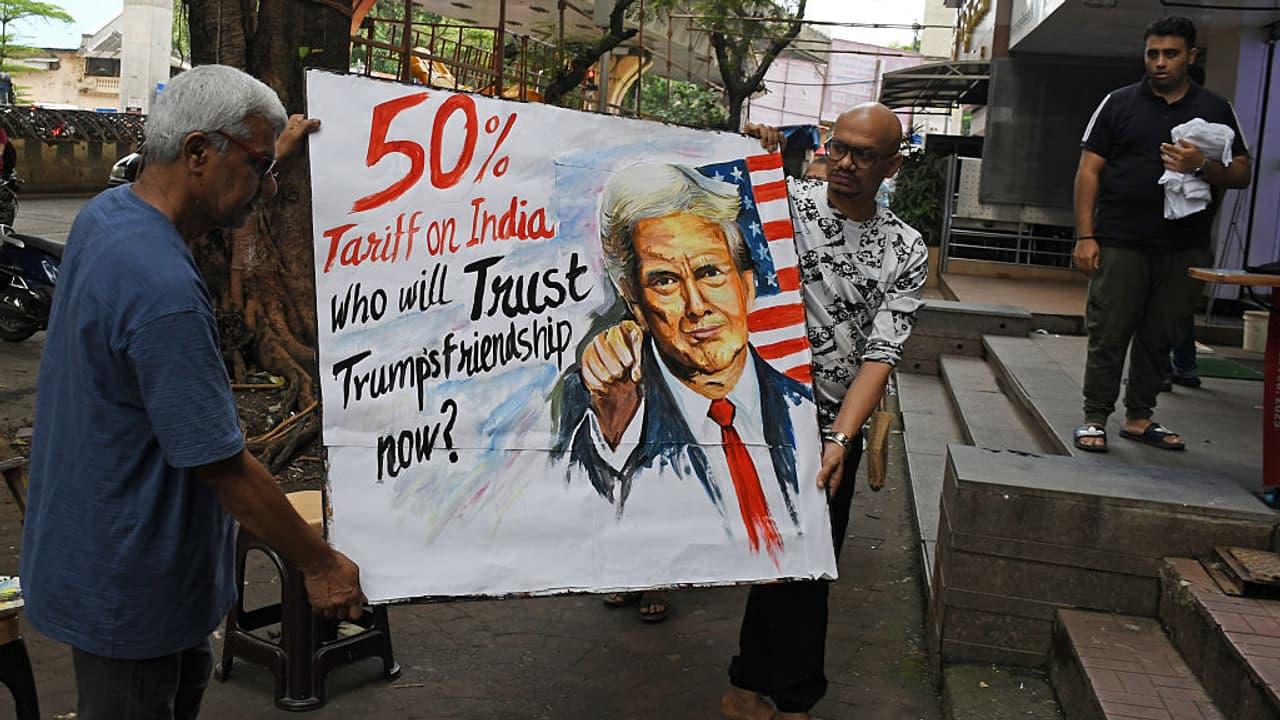From Shrimp To Spices: Trump's Tariffs Plunge Indian Industries Into 'Trauma' Opinion
US President Donald Trump has doubled tariffs on Indian imports to 50%. This move could make textiles and seafood more expensive for American buyers. The tariff is one of the highest Trump has imposed on any country. It was doubled because India is buying Russian oil, something Trump strongly opposes. He is also considering more sanctions on Russia while trying to push for a peace deal in the Ukraine war.
The European Union already bans most Russian oil products. U.S. Vice President J.D. Vance said the new tariffs on India will make it harder for Russia to earn money from oil. But these political moves will affect businesses and consumers too. In 2024, the U.S. imported goods worth over $85 billion ( ₹7.395 lakh crore) from India. Also, two-thirds (66.66 %) of America's biggest companies have offices or operations in India.
As the U.S. tariffs on Indian imports start taking effect, American consumers may soon feel the impact through higher prices on many products.
Shrimp and Other Premium Food Products
A report by the Global Trade Research Initiative says Indian exports to the U.S. may drop to below $50 billion (₹4.35 lakh crore) in 2026 because of the new tariffs.
For comparison, the U.S. has already imported over $56 billion (₹4.87 lakh crore) from India in just the first six months of this year.
The higher tariffs will badly affect the shrimp industry, since India is one of the main suppliers of seafood to the U.S.
Shrimp farmers in Andhra Pradesh were already hurt by the 25% tariff in early August, and now face more trouble with the doubled rate.
The U.S. has started buying shrimp from Ecuador, Indonesia, and Vietnam as alternatives, researchers said.
Several regional food products are also hit by tariffs.
Spice workers in Unjha, Guntur, and Erode are struggling to sell their products after the tariffs, even though spice exports had earlier grown by 17% from 2024 to 2025.
American companies are now buying basmati rice from Pakistan, spices from Vietnam, and tea from Kenya and Sri Lanka.
These shifts could change the prices for American consumers.
Clothing and Fabrics
Textiles, jewelry, and clothing will be hit hard by the tariffs, since these sectors depend on the U.S. for over 35% of their global exports, the Global Trade Research Initiative said.
As time reported, Indian leather footwear exporter Puran Dawar told NPR (National Public Radio),“This is an absolute shock.”
He said the tariffs will cut Indian jobs in the short term, as companies struggle to find new markets to sell their products.
Before the new tariffs, India was valued for its low production costs.
Now, the U.S. may buy diamonds or gold from Israel or Belgium, and clothing from Vietnam or Bangladesh.
Bangladesh managed to lower its tariff from 37% to 20% through high-level talks, big U.S. purchase commitments like Boeing planes, and strong lobbying by its garment industry.
American consumers are already paying more for clothes, and the new higher tariffs on India could push prices up even further.
Furniture, bedding, and carpets may also suffer, with the risk of carpet factories in Bhadohi, Mirzapur, and Srinagar shutting down.
Traditional Kashmiri carpet makers are especially worried about these challenges.
Researchers warn that high tariffs could push other countries to replace India in key markets, making it hard for India to regain its place even if tariffs are later reduced.
“The entire industry is in trauma,” said Kirit Bhansali, chairman of India's Gem and Jewelry Export Promotion Council.
He explained that the gem trade runs on small profits and warned that about 175,000 workers could be affected by the tariffs.
Key Exceptions
Although many Indian goods face high import taxes, the U.S. made exceptions for Indian pharmaceuticals, which depend heavily on the American market.
Trump has threatened to add a small tariff on medicines later, possibly increasing it in the future, but no official step has been taken yet.
There are similar exceptions for semiconductors, electronics, steel, and aluminium, though they face separate tariffs.
Trump kept smartphones exempt, which helps both India's economy and American consumers, especially as India has now overtaken China in smartphone exports to the U.S.
(Girish Linganna is an award-winning science communicator and a Defence, Aerospace & Geopolitical Analyst. He is the Managing Director of ADD Engineering Components India Pvt. Ltd., a subsidiary of ADD Engineering GmbH, Germany. Contact: ...)
Disclaimer: The opinions expressed are solely those of the author and do not reflect the views or stance of the organization. The organization assumes no responsibility for the content shared.
Legal Disclaimer:
MENAFN provides the
information “as is” without warranty of any kind. We do not accept
any responsibility or liability for the accuracy, content, images,
videos, licenses, completeness, legality, or reliability of the information
contained in this article. If you have any complaints or copyright
issues related to this article, kindly contact the provider above.
Most popular stories
Market Research

- Invromining Expands Multi-Asset Mining Platform, Launches New AI-Driven Infrastructure
- Superconducting Materials Market Size, Trends, Global Industry Overview, Growth And Forecast 2025-2033
- United States Lubricants Market Growth Opportunities & Share Dynamics 20252033
- Building Automation System Market Size, Industry Overview, Latest Insights And Forecast 2025-2033
- Brazil Edtech Market Size, Share, Trends, And Forecast 2025-2033
- Australia Automotive Market Size, Share, Trends, Growth And Opportunity Analysis 2025-2033






















Comments
No comment